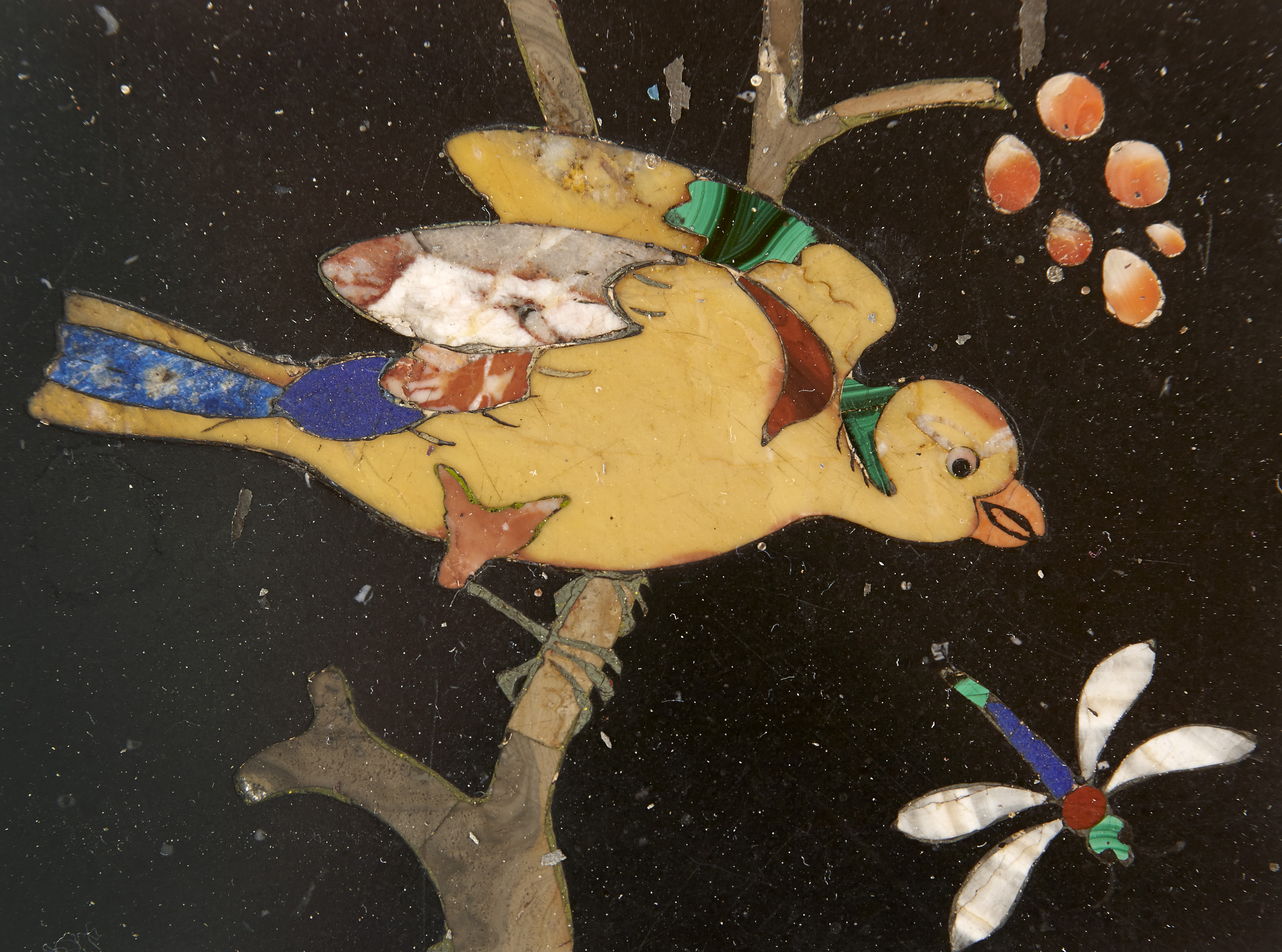All images © Ashmolean Museum, University of Oxford, kindly provided for the review of the exhibition, Colour Revolution: Victorian Art, Fashion and Design, 21 September 2023—18 February 2024. [Review by Cynthia Gamble.]


Left: The whole bookcase. Right: The figure of Art, top centre, by Edward Burne-Jones.
Great Bookcase. Designer: William Burges (1827-1881). 1859-62 (restored 1878). Probably made by Thomas Seddon, who was a furniture designer as well as an artist (Crook 399, n.75). Artists, besides Burges himself, as listed in the Ashmolean Museum collections information: Edward Burne-Jones, John Anster Fitzgerald, Henry Holiday, Stacy Marks, Albert Moore, Thomas Morton, Edward Poynter, Dante Gabriel Rossetti, Charles Rossiter, Frederick Smallfield, Simeon Solomon, William Frederick Yeames, Frederick Weeks, and Nathaniel Westlake. Oak, carved, painted and gilt. Size: 317.5 x 173.9 x 49.5 cm. Purchased by the museum in 1933. This was designed and decorated for Burges's office and then moved to the library of his own home, the Tower House in Melbury Road, Kensington. It is now at the Ashmolean Museum, University of Oxford, and at the time of writing is one of the highlights of the Ashmolean Museum's exhibition, Colour Revolution: Victorian Art, Fashion & Design, 21 September 2023-18 February 2024.[Click on the images to enlarge them.]


Left: An example of Christian Art (shown on the left side of the bookcase): Edward Poynter's Dream of Dante. Right: An example of Pagan Art, shown on the right side: Sappho seranading Phaon, by Henry Holiday (see Crook 328).
The theme of the bookcase, which was for holding Burges's artbooks, was "Pagan and Christian Art, expressed in allegories of poetry, architecture, sculpture, painting and music" (Crook 328). Naturally, in the exhibition, the main focus is on colour, and the catalogue describes it as "a synthesis of past and present, mainly echoing the scientific and technological breakthroughs achieved during the nineteenth century, yet partially recalling medieval colours." It explains that the bookcase was shown at the International Exhibition of 1862, when it stood "in the middle of the Medieval Court," transporting visitors "back to ‘the ages of [ultramarine blue and] gold' while also acknowledging the new pigments that vividly illuminated the neighbouring pavilions” (Ghigo 120).

This is one of the "bookcase details" given in the exhibition press pack. Crook writes that the birds painted inside the doors of the bookcase were by Stacy Marks (328). All Marks himself mentions in his memoirs is the base of the bookcase, which "had merely the ground laid for the decorations" when he came to the project. He says that here he painted "under Burges’s superintendence and from his suggestion — a concert of the Pierides, half women, half birds, occupying the two centre panels flanked by single figures of Arachne and Syrinx" (220). The bright, chirpy bird shown above seems to be distinctly Burges's own conception and handiwork. But such was the nature of the collaboration on this fascinating and "iconic piece of furniture" (Crook 328) that individual attributions are sometimes uncertain and perhaps not called for.
Link to Related Material
- The Red Bed, with Henry Holiday's painted headboard
- The Crocker Dressing Table
- The Narcissus Wash Stand
- The Tower House, Kensington
Bibliography
Crook, J. Mordaunt . William Burges and the High Victorian Dream. Revised and Enlarged Edition. London: Francis Lincoln, 2013. [Review]
Ghigo, Tea. "Object in Focus: The Great Bookcase: Between Medieval and Victorian Colour." Colour Revolution: Victorian Art, Fashion & Design. Edited by Charlotte Ribeyrol, Matthew Winterbottom and Madeline Hewitson. Pbk. Oxford: Ashmolean, 2023. 117-21. [Review].
"Great Bookcase." Ashmolean Museum Oxford. Web. 23 October 2023.
Marks, Henry Stacy. Pen and Pencil Sketches (I). London: Chatto & Windus, 1894. 145-161. Internet Archive, from a copy in the library of GardenofShyamal/JaiGyan. Web. 23 October 2023.
Created 23 October 2023